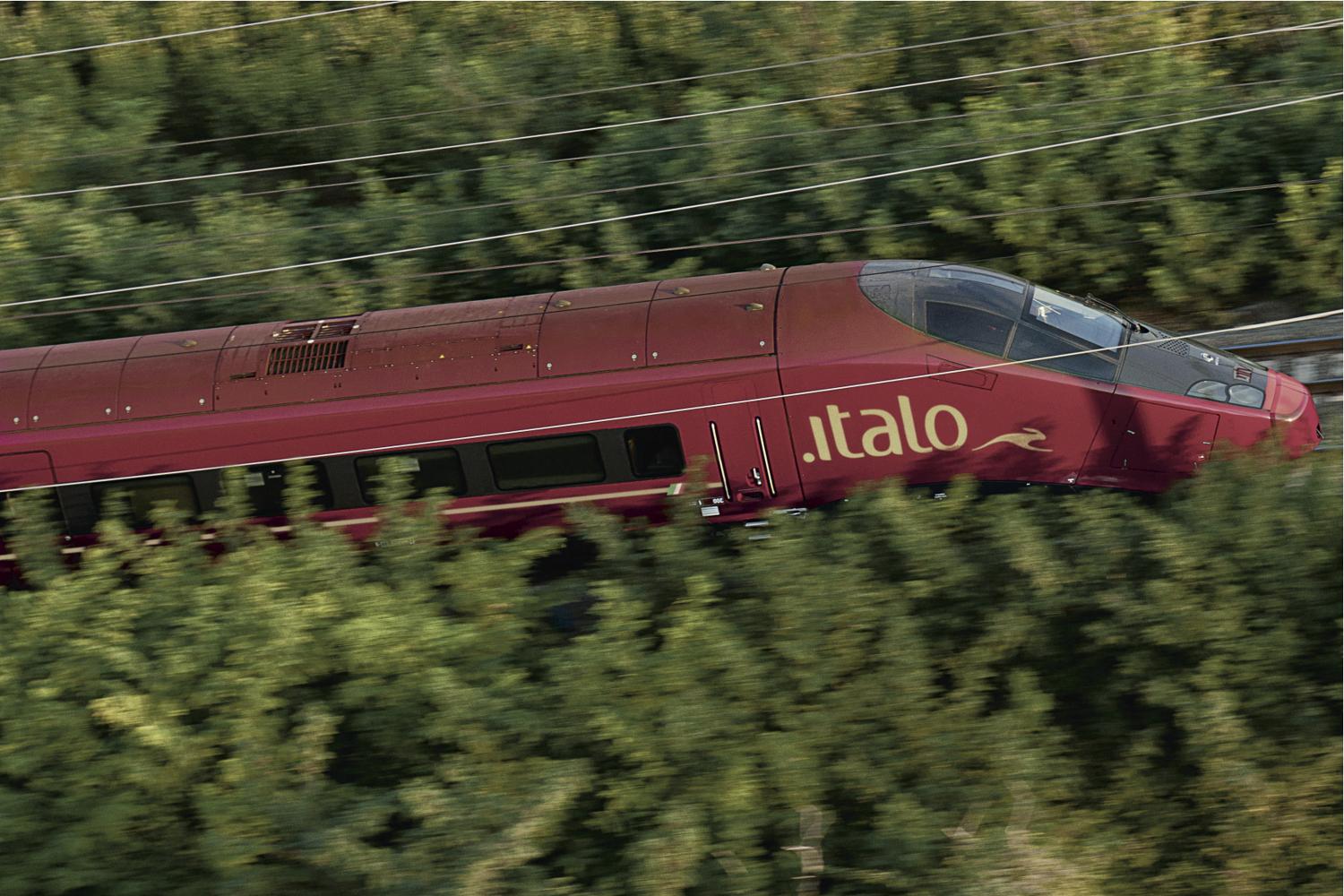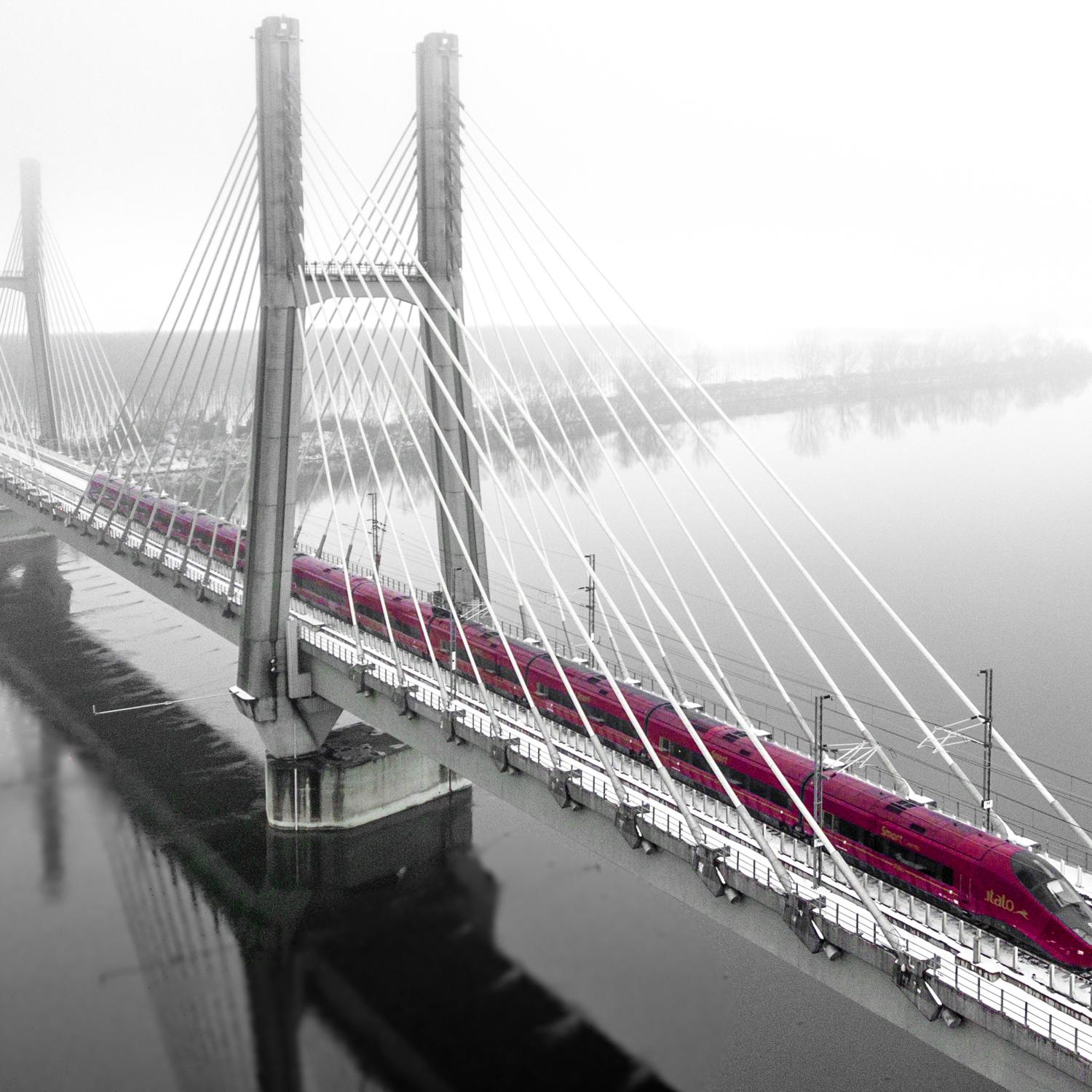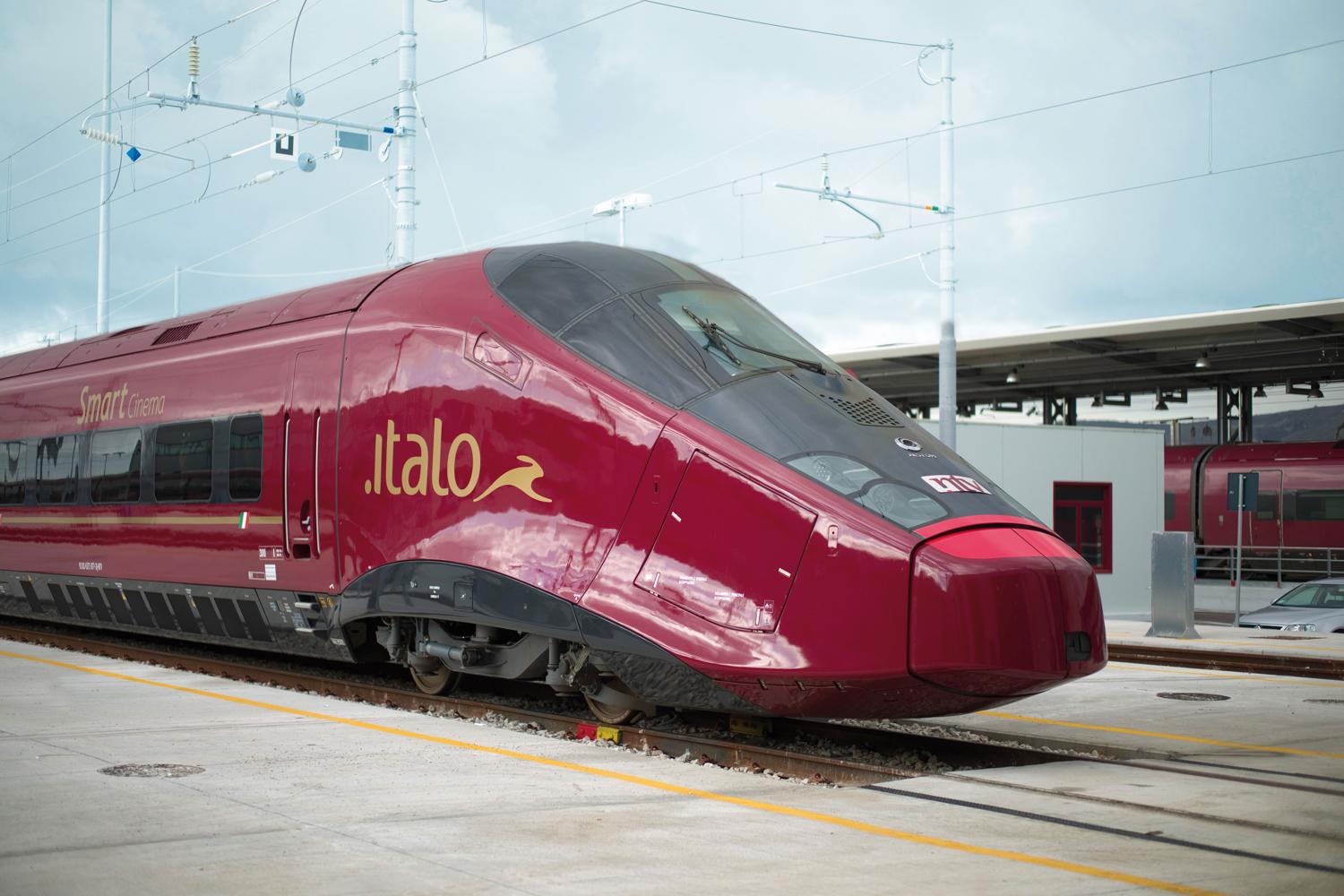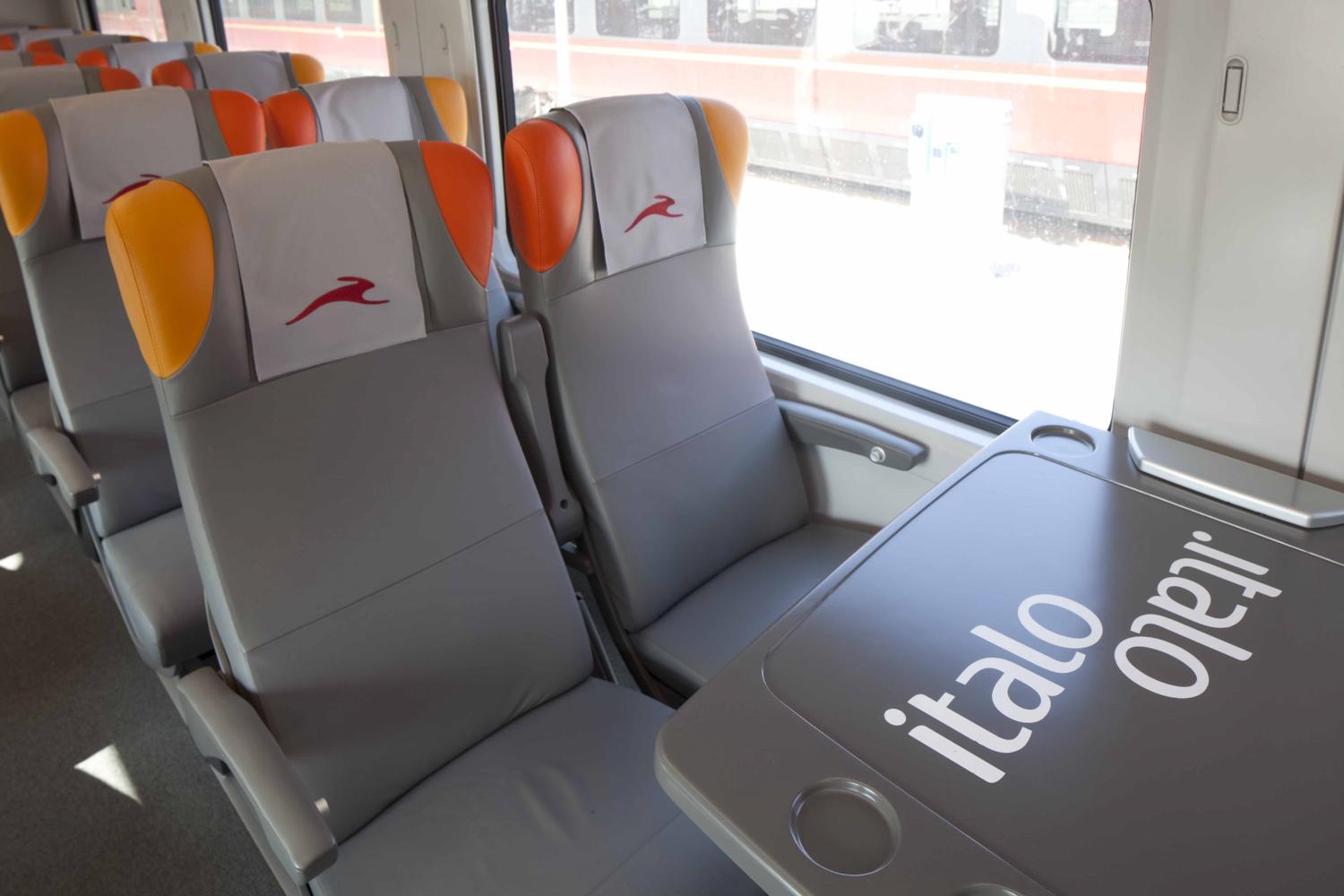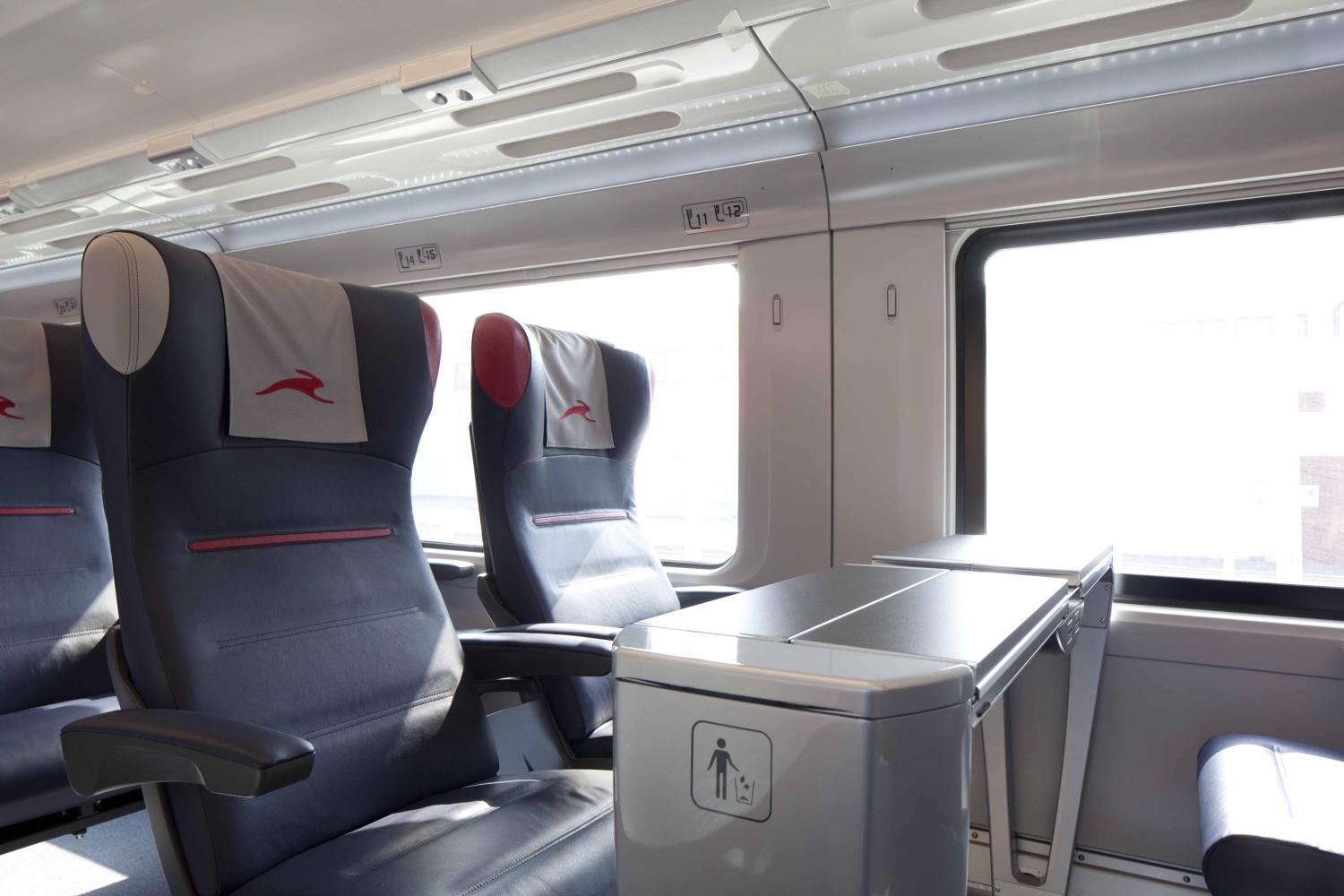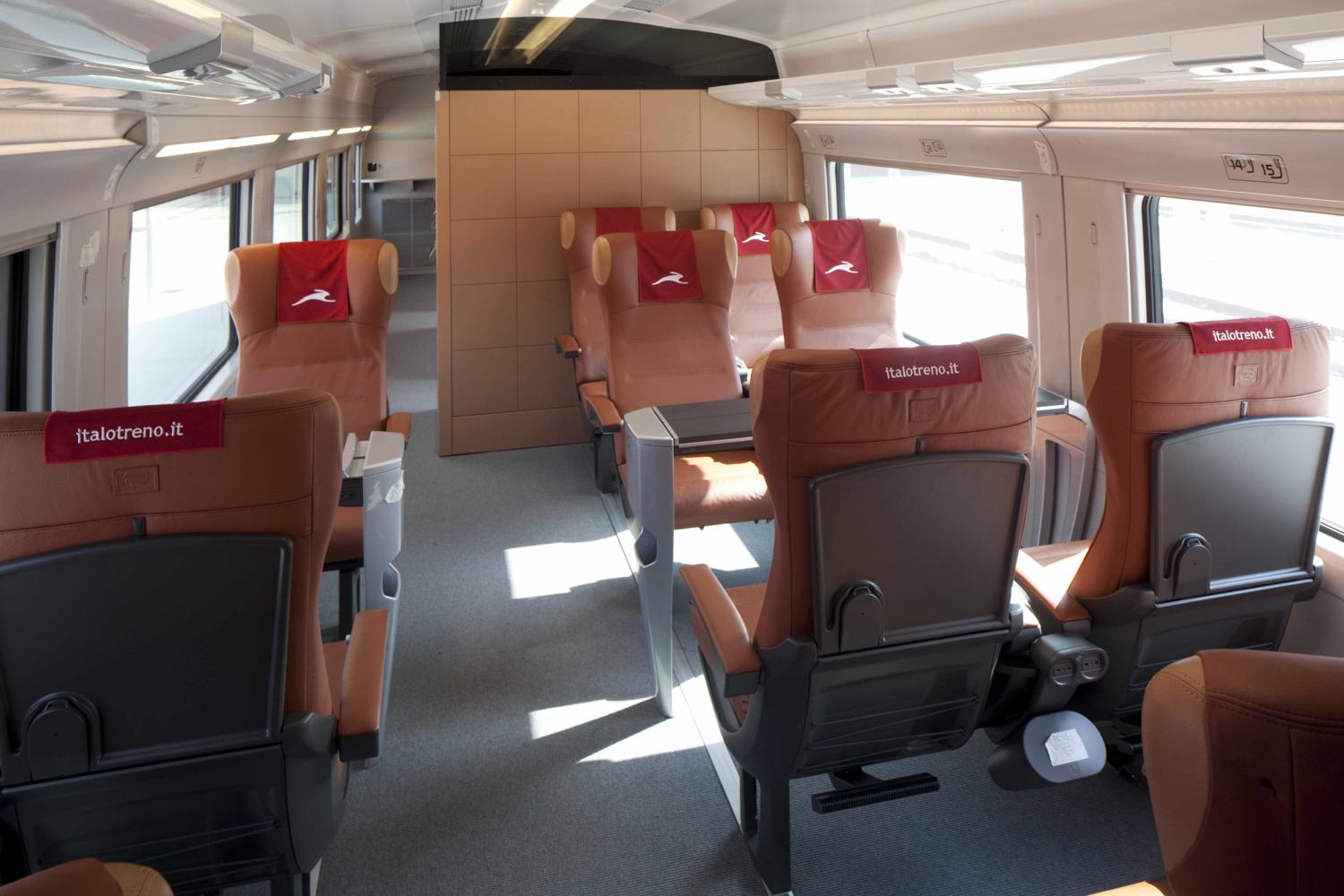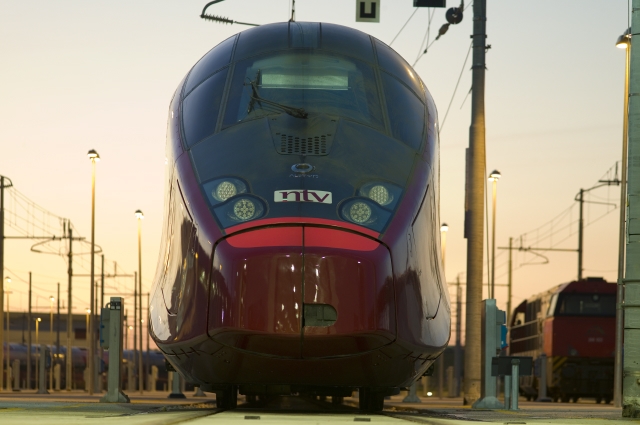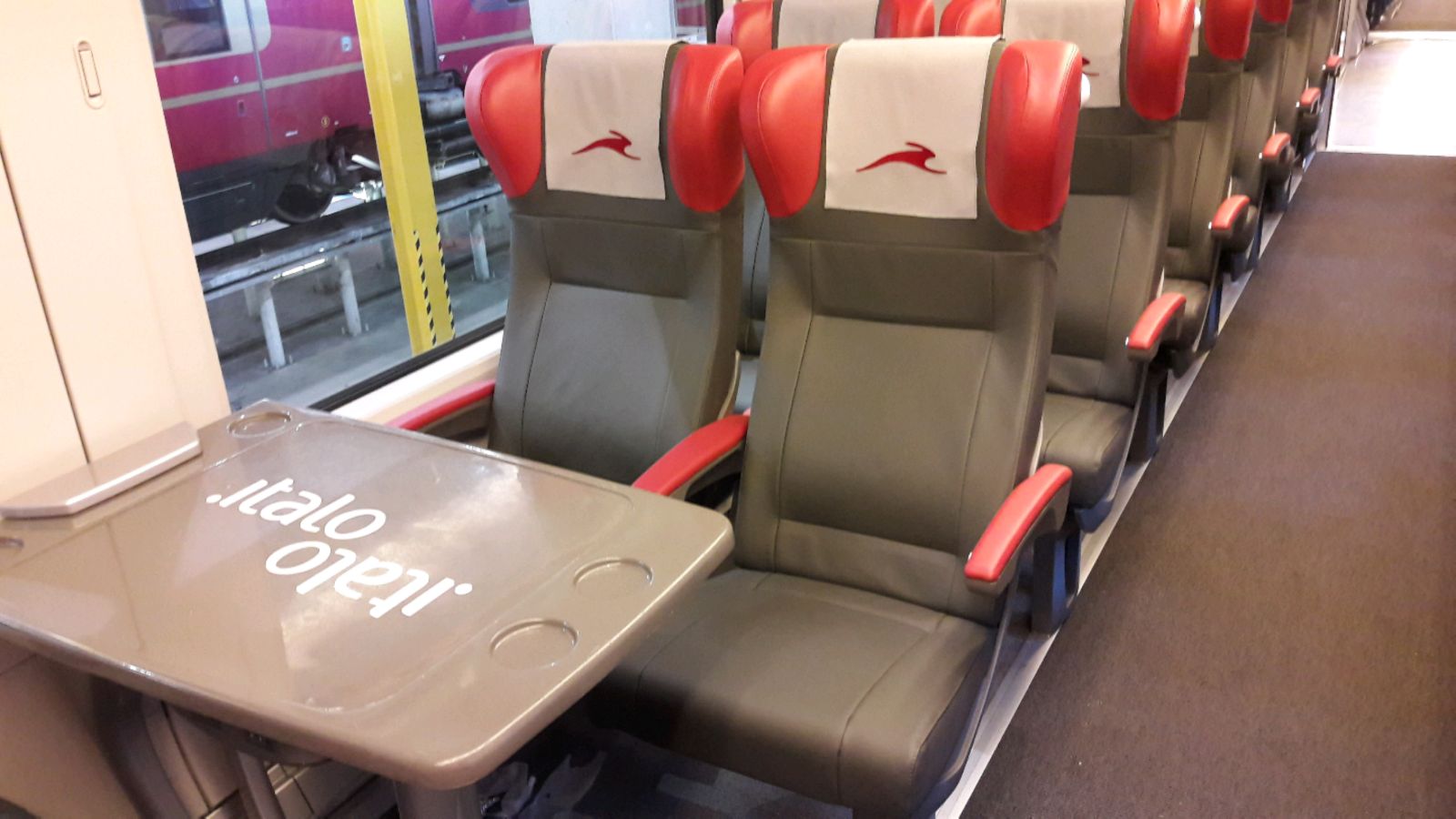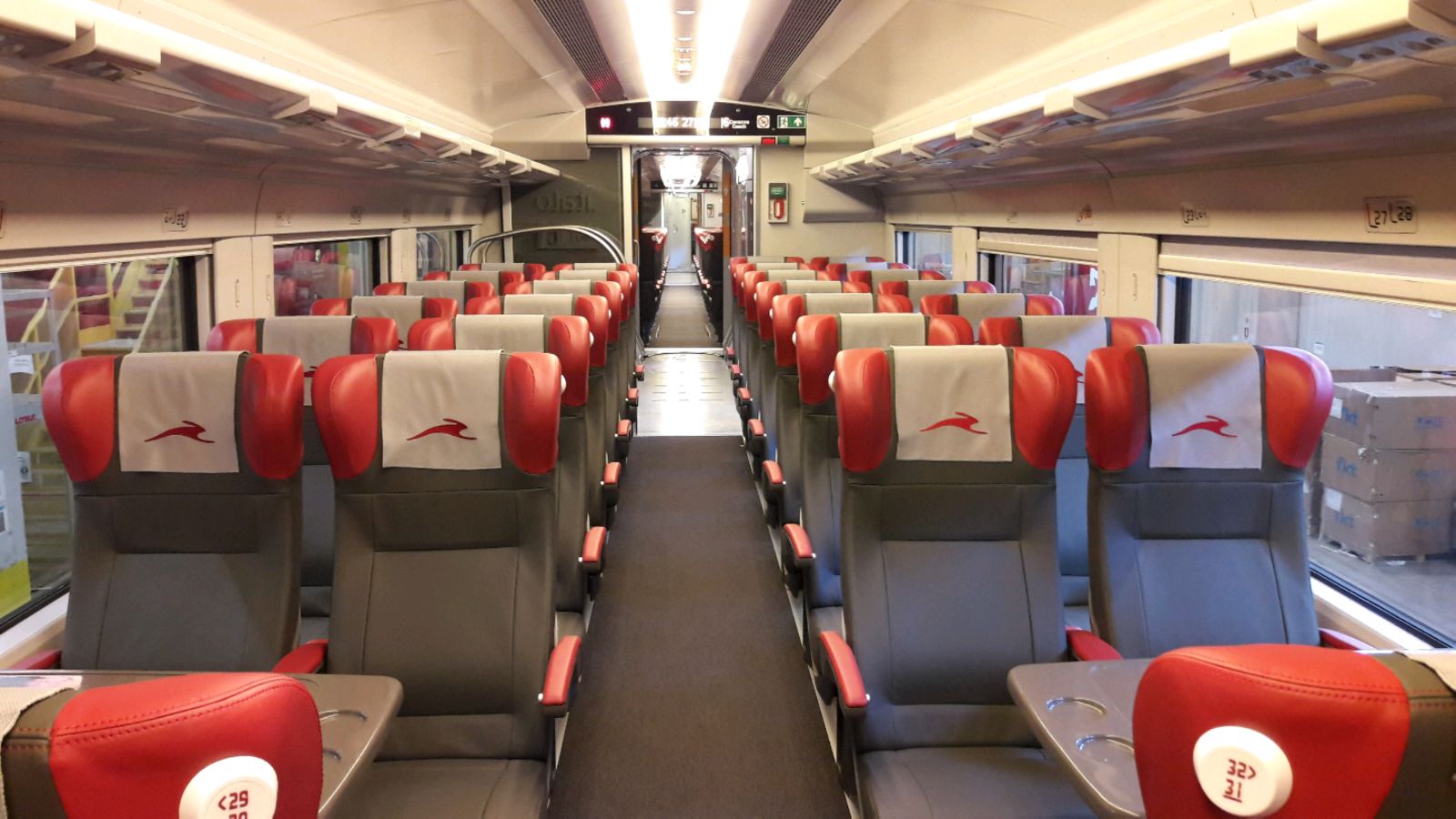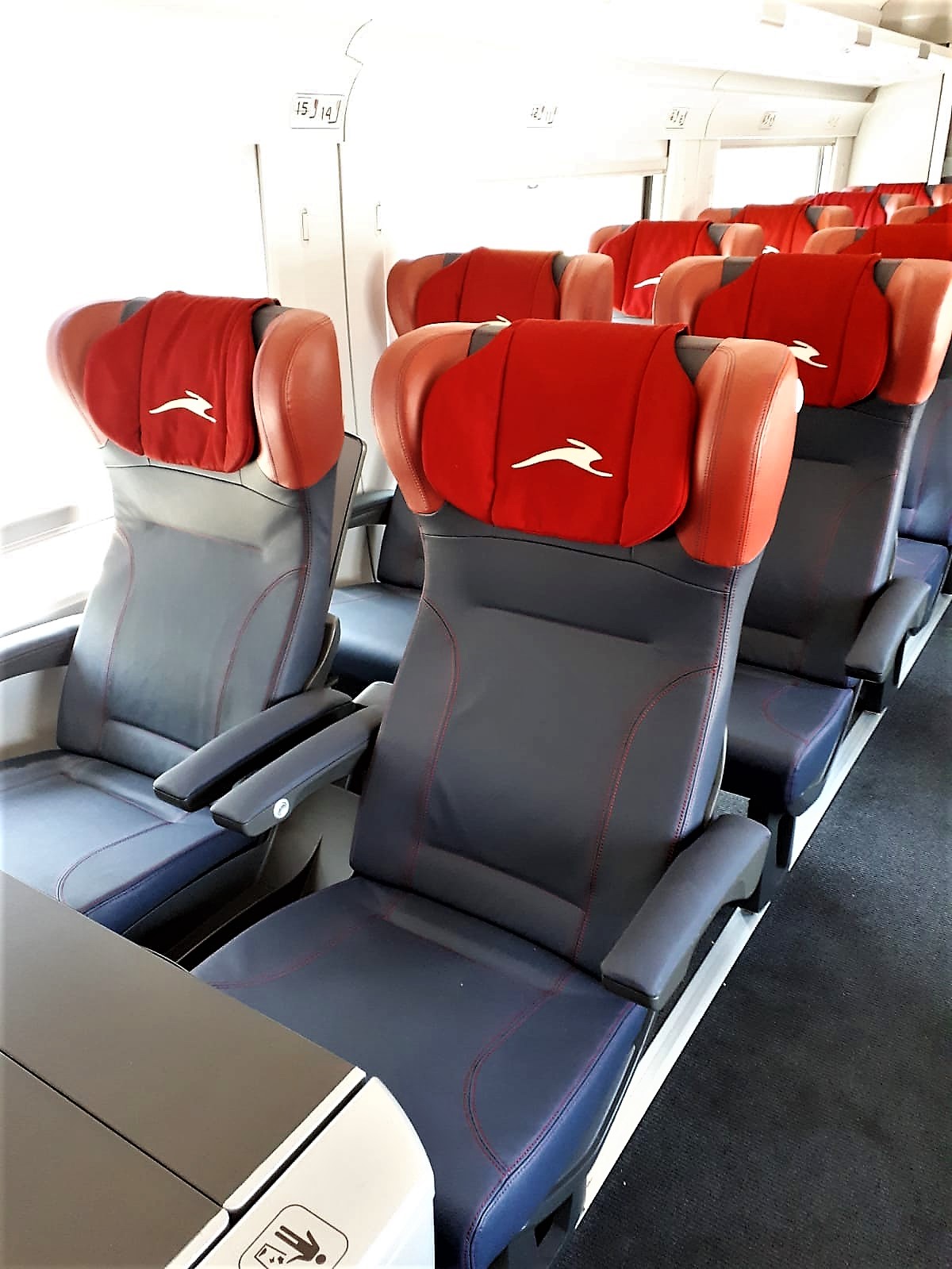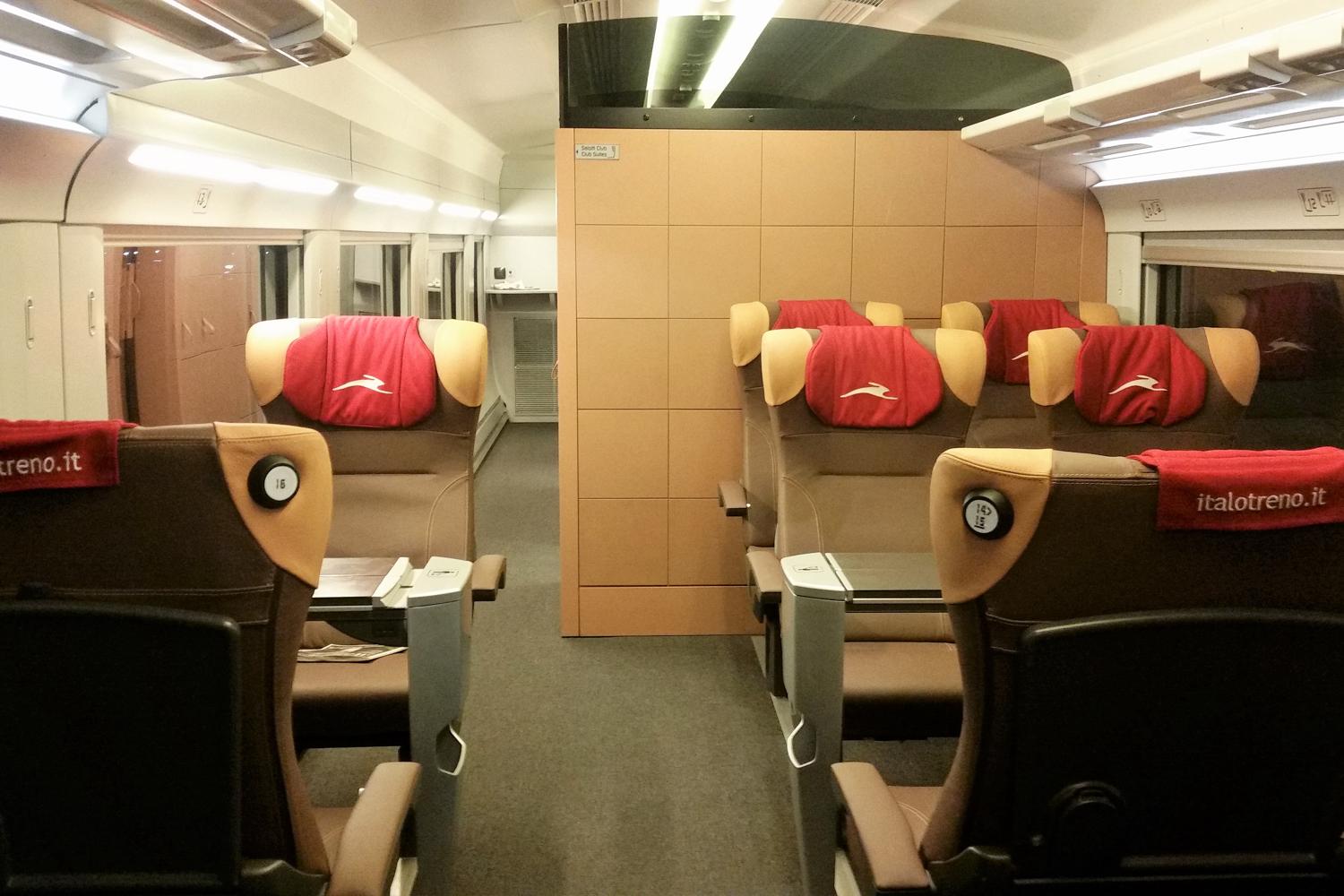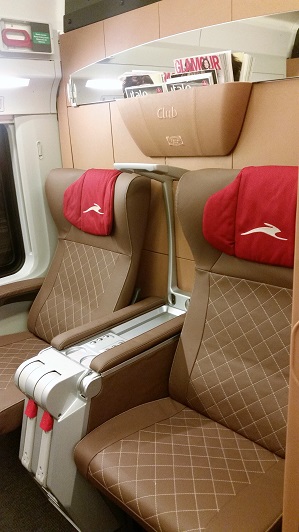Agv 575
Italo is based on the technology of the latest generation very high speed AGV Alstom trains, in which the drive system is distributed under the entire train, instead of being concentrated in dedicated locomotives at the front and back of the train. This innovative concept makes it possible to eliminate locomotives, using the space freed up to accommodate more passengers (increasing capacity on-board by 20%).
Its articulated trainset architecture with distributed power also eliminates much of the vibration and the noise produced by the movement on board, absorbs the movement between cars, optimises the train's aerodynamics, ensures optimum safety and provides maintenance savings of 15%.
This innovative technical solution, in conclusion, in combination with composite materials and by enhancing the efficiency of the traction systems, have made it possible to reduce the mass of Italo's train, making it 70 tonnes lighter than competitors.
Italo therefore has a particularly good performance from the point of view of the environment, with energy consumption savings of 15%.
In more detail, the main advantages of the new Italo train cover all aspects of performance: power/weight, room and comfort on-board, power consumption, safety and maintenance.
Power/weight ratio
Synchronous motors with permanent magnets are installed in the bogies, have an excellent power/weight ratio, and are lighter and more compact, to the advantage of energy saving. In fact, Italo develops an unmatched weight/power ratio of 7500 kW/374 tonne, 23% higher than its competition.
Room and comfort on-board
Eliminating the locomotives, replaced by the drive system distributed over the entire train, freed room for passengers, all to the advantage of the roominess inside the cars (20% additional area).
Also as to width, with 3 m wide cars, and an internal width of 2.75 m, Italo stands out as best-in-class for livability, all to the advantage of both the comfort of seated passengers, and the room in the corridors, which are wide enough to move about in and get past passengers going the other direction, even with medium sized luggage.
The optimisation of the space was completed by a careful study of the light coming in through the windows (+15% larger windows), of ergonomics and of on-board equipment for passengers.
Access to the train has been made easier for all passengers, by lowering the floor by 10 cm with respect to that of trains with a traditional architecture.
Attention to ergonomics is also found in the driver's cab, designed to be compliant with the European Drivers Desk and European Cabin international standards, to make it as easy as possible for train drivers to learn how to optimally operate the train’s controls.
Energy Consumption
Italo's new architecture, thanks to the reduced number of bogies (less turbulence, and therefore reduced drag), in combination with the body shape optimised for aerodynamics, enables a particularly good performance from the point of view of the environment, providing an energy consumption savings of 15%. With respect to a TGV, the energy consumption per seat is reduced by approximately 30%.
Safety
Italo is designed to ensure maximum passenger safety. Passenger protection in the event of impact is ensured by the sizing criteria of the structure of the body and by energy absorbers that fully satisfy the requirements of European regulations on passive safety. Moreover, the articulated architecture of the trainset creates a semi-rigid link between cars with respect to conventional trains (the bogies are positioned between the carriages of a train) and renders the train as a whole more rigid: this improves resistance to lateral wind and minimises the risk that the trainset will break up and cars will fold up “like an accordion”, in the event of a derailment, as would happen to a non-articulated train.
Maintenance
35 to 40% of a train's maintenance costs are related to the bogies, since they contain most of the items subject to wear. As a result, the reduced number of bogies compared to a traditional train, combined with the higher number of seats, has reduced the maintenance costs per seat by 30%.

